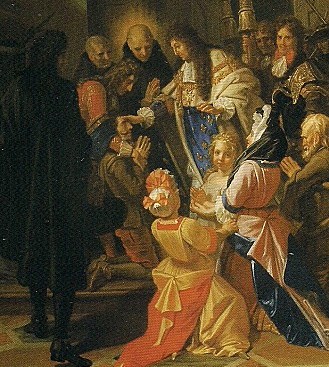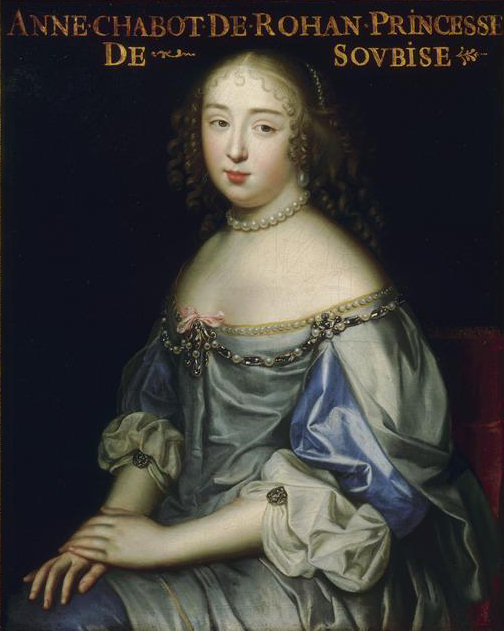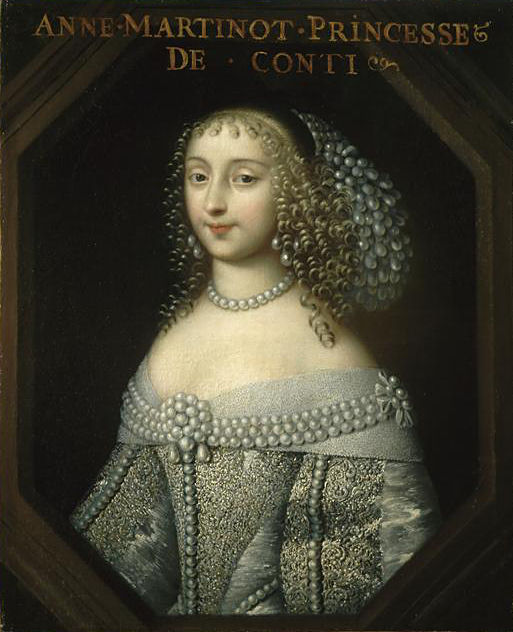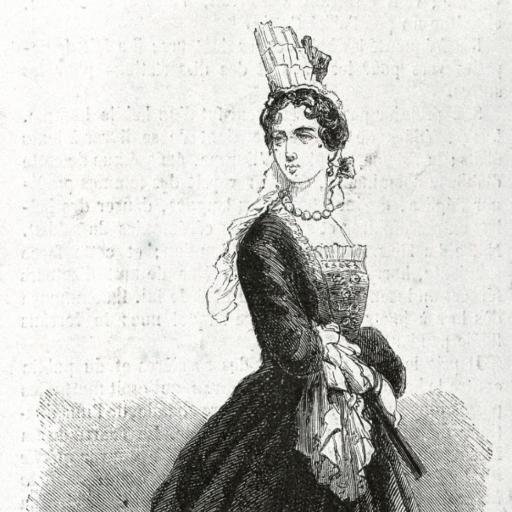Lydie de Rochefort-Théobon, Comtesse de Beuvron
Born in the same year as Louis XIV, Lydie, although in favour of the Sun King for quite a while, is one of his lesser known mistresses.
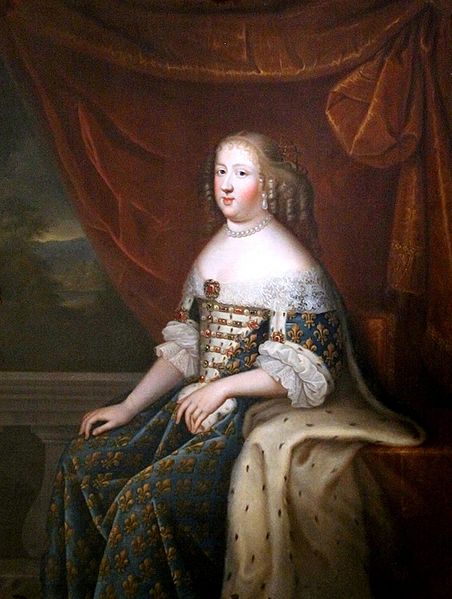
She was the daughter of Jean de Rochefort-Theobon and his wife Anne de Chaussade de La Mothe. The couple also had a son, Charles Bordeaux de Rochefort, as well as two more daughters, Marie Guyonne de Rochefort-Théobon and Françoise de Rochefort-Théobon. The latter was known at court as Mademoiselle de Loubès and apparently acted as spy for the Chevalier de Lorraine after she got a position as demoiselle d’honneur to the second Madame.
Lydie’s family was of old nobility and she was probably born at the château de Lespinasse, where she spent most of her childhood.
Known at court as Mademoiselle de Theobon, Lydie became a demoiselle d’honneur to Marie-Thérèse d’Autriche some-when before 1670. Madame de Sévigné relates a funny anecdote of an indecent that took place in 1671. Lydie, Madame de Ludres, and some others were bitten by a small dog and it was feared they might get a case of rabies. To prevent that, all of those involved were sent to Dieppe, at the coast of Normandy, in order to hop into the sea, which was a treatment advised by the Messieurs Doctors to prevent rabies. Mademoiselle de Theobon did not want to go, but the Queen refused to let any of them serve her until they had contact with sea-water. Thus Louis XIV himself ordered the ladies, which made much ado about it, to go.
At that time, which might explain her refusal to leave, Lydie received frequent visits from the King already. The affair apparently started during a visit to Chambord and is even mentioned by Spanheim, ambassador of Prussia in France, in his secret dispatches. It went on through the years 1671 and 1672, where the Marquis de Saint-Maurice mentions it is believed the King enjoys to spend time in company of Mademoiselle de Theobon, and continued to at least the end of 1673.
The Marquis de Saint-Maurice mentioned in February 1673, that the Queen’s ladies were not present at a ball at Saint-Germain, which led many to believe it might be because Madame de Montespan could be pregnant and thus does not wish to give her royal paramour a chance to ogle them. He also mentions that it seems the King is entertaining himself with Mademoiselle de Theobon quite often, who is believed to have been honoured by him in the past as well. The fun was over for a while by November. Madame de Montespan was quite the jealous type and aware her lover amused himself with the demoiselles d’honneur. She tried all she could to get him to dismiss the demoiselles, and replace them with pious married ladies, but he turned the idea down for quite a while. Until November 26 in 1673. Lydie was thus dismissed, along with many others. She, and some of the other girls, afterwards became demoiselles d’honneur to Liselotte von der Pfalz.
Apparently, she was then approached by Monsieur to keep an eye on his new wife, but that did not quite work out, because Lydie and Madame became friends rather quickly.
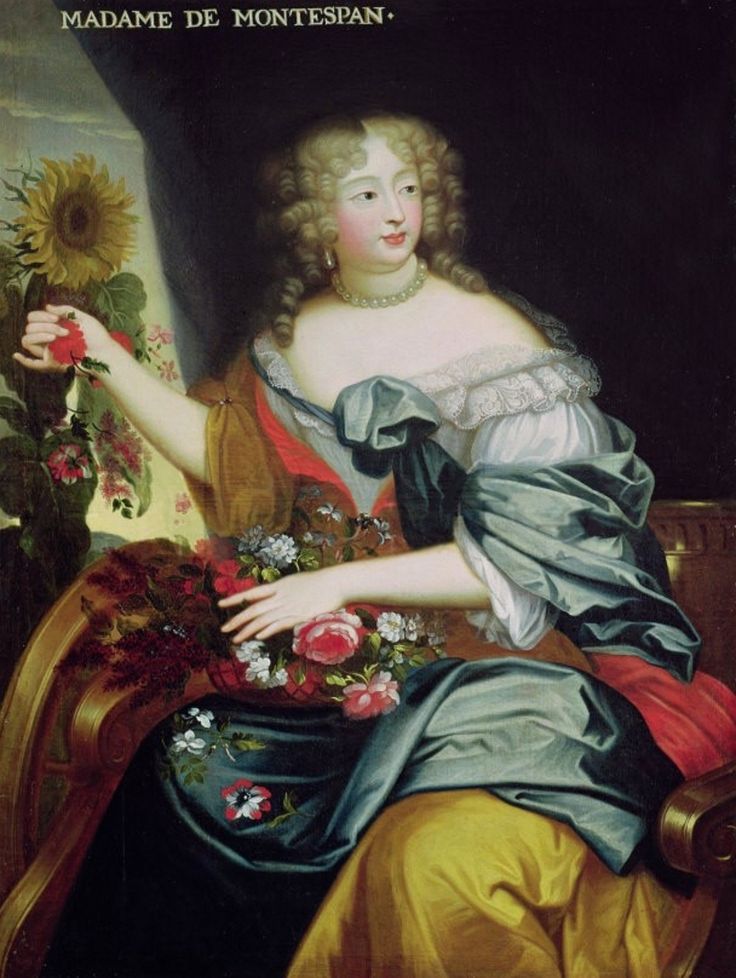
Her affair with the King was not entirely over either. Madame de Sévigné mentioned her in a letter to her daughter, dated 7 August 1676. She hints that Louis XIV still had quite passionate feelings for her, and she for him, which some at court believed to be rather ridiculous, since they saw no chance that Lydie could ever replace Quanto, her nickname for Madame de Montespan.
Around the same time, as she was nearly forty years old, Lydie considered marriage. Mademoiselle de Theobon had her eyes on another Louis, namely Louis Oger de Cavoye….but a other of Madame’s demoiselles beat her to it and he married Louise-Philippe de Coëtlogon in 1677 instead of Lydie.
Lydie nevertheless found herself a other dashing gentleman to marry the following year. It was Charles d’Harcourt, Comte de Beuvron, capitaine des gardes de Monsieur.
The year 1682, wasn’t too good a year for the now Comtesse de Beuvron. Being friends with Madame, she got into the line of fire between Madame and Monsieur and was forced to retire, spending some time in various cloisters. She remained faithful to Madame anyway and Madame often mentioned her in her letters. In one she calls her the “die gute schwarze Jungfer” -the good dark maid- referring to Lydie’s dark hair and complexion, in a other she writes “Ich habe sie sehr lieb” -she is very dear to me-.
With revocation of the Edict of Nantes in 1685, Lydie converted Catholicism. She was widowed, childless and poor, three years later, in 1688, yet remained very close to the family of her late-husband. The Comtesse and Madame saw more of each other again the same year and, at the request of Madame, Louis XIV doubled Lydie’s pension. Raising it from 2000 livres a year to 4000 livres.
Yet, Lydie was still not allowed to officially return to Madame’s side by Monsieur. In hopes to change that, she took in mind to marry one of Monsieur’s favourites, the also widowed Marquis d’Effiat. Madame did not like that one bit. Monsieur doesn’t seem to have minded, since it looks like he intended to request his brother to turn the Marquis into a Duc. The marriage never took place. Madame was so outraged such a scandalous marriage was even considered, that she prevented it. Thus the Comtesse de Bouvron did not return to Madame’s side until 1701, after Monsieur died.
Lydie died seven years later, October 23 in 1708, at Marly. Madame was much troubled by her demise. In a letter dated October 25, she writes: “I am writing to you today, although I am afflicted from the depths of my soul and … I lost the day before yesterday a good and faithful friend, namely the Comtesse de Beuvron, which has cruelly touched me. “
